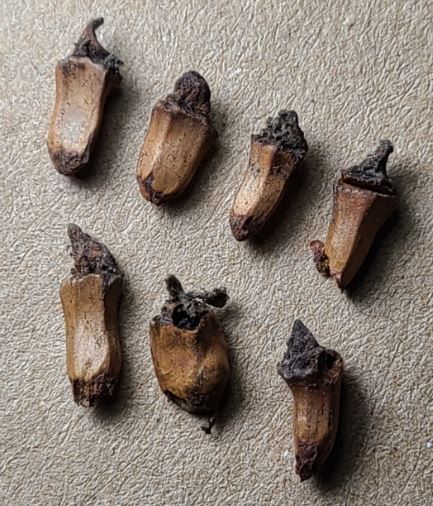Dryocosmus favus (agamic)
Dryocosmus favus sp. nov.
Gall. — In clusters from about fifty to one hundred on the trunks of young red and scarlet oaks (Quercus rubra and coccinea), immediately above the ground, in autumn. Hard and woody (when dry) probably soft when fresh, monothalamous. Oblong, narrower at base than at apex, which is flat. In form they are somewhat like square tubes or five or six-cornered tubes, giving them the appearance of cells of a honeycomb. Hollow inside and rather thin-walled. The fly emerges from the apex of the gall. Length, 5 mm. ; width of apex, 3 mm. ; diameter of cluster, 28 mm.
Habitat: Phillips Bluff, La.; Fleetwood, Pa.
The fly was described from many specimens loaned to me by Prof. A. D. Hopkins. The species belongs to the European genus Dryocosmus Giraud not heretofore recorded from North America. The fly emerges very early in spring and the gall reaches maturity late in fall.
”- William Beutenmuller: (1911) Three new species of Cynipidae (Hym.).©
Reference: https://www.biodiversitylibrary.org/item/84975#page/11/mode/1up









